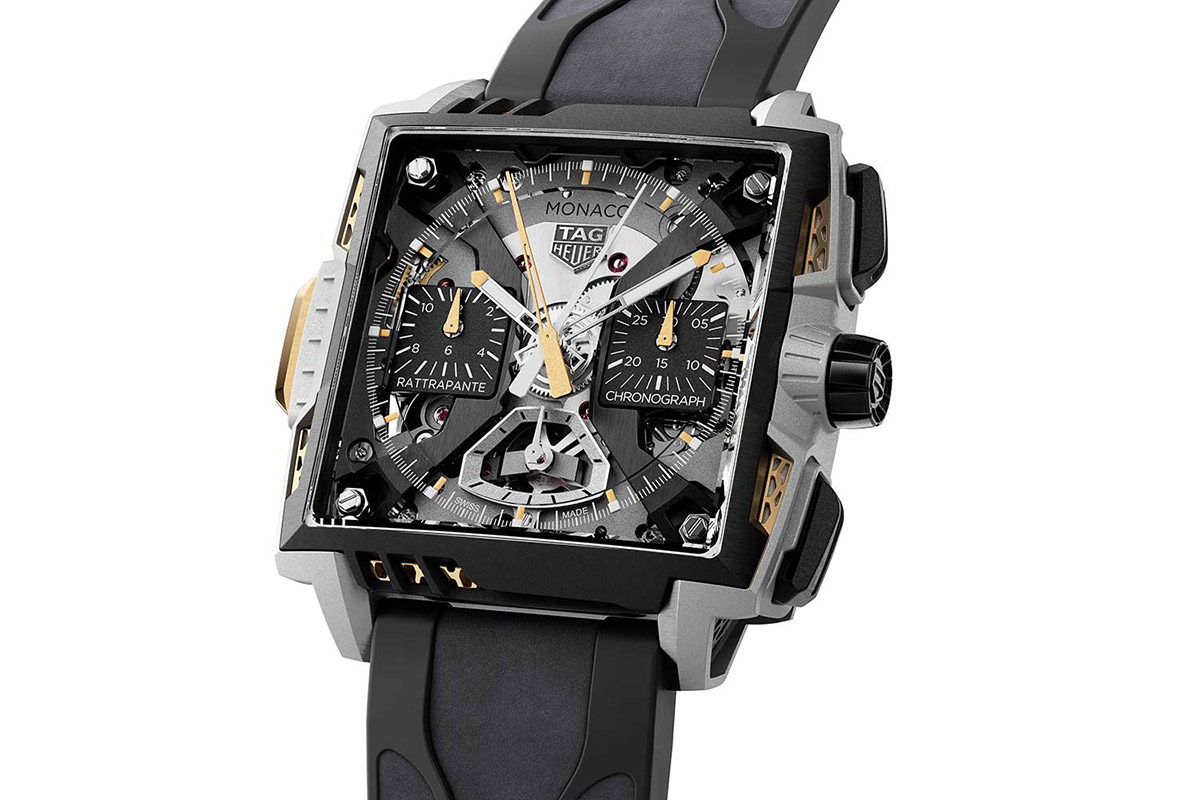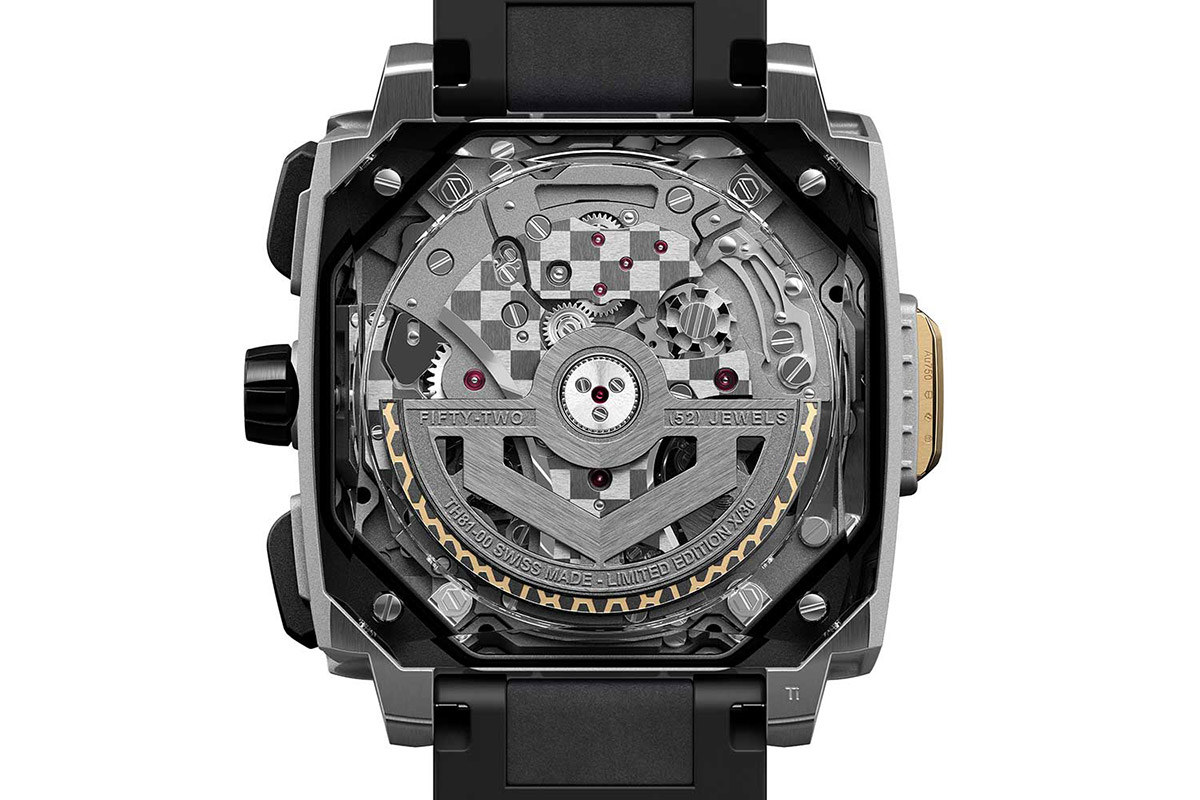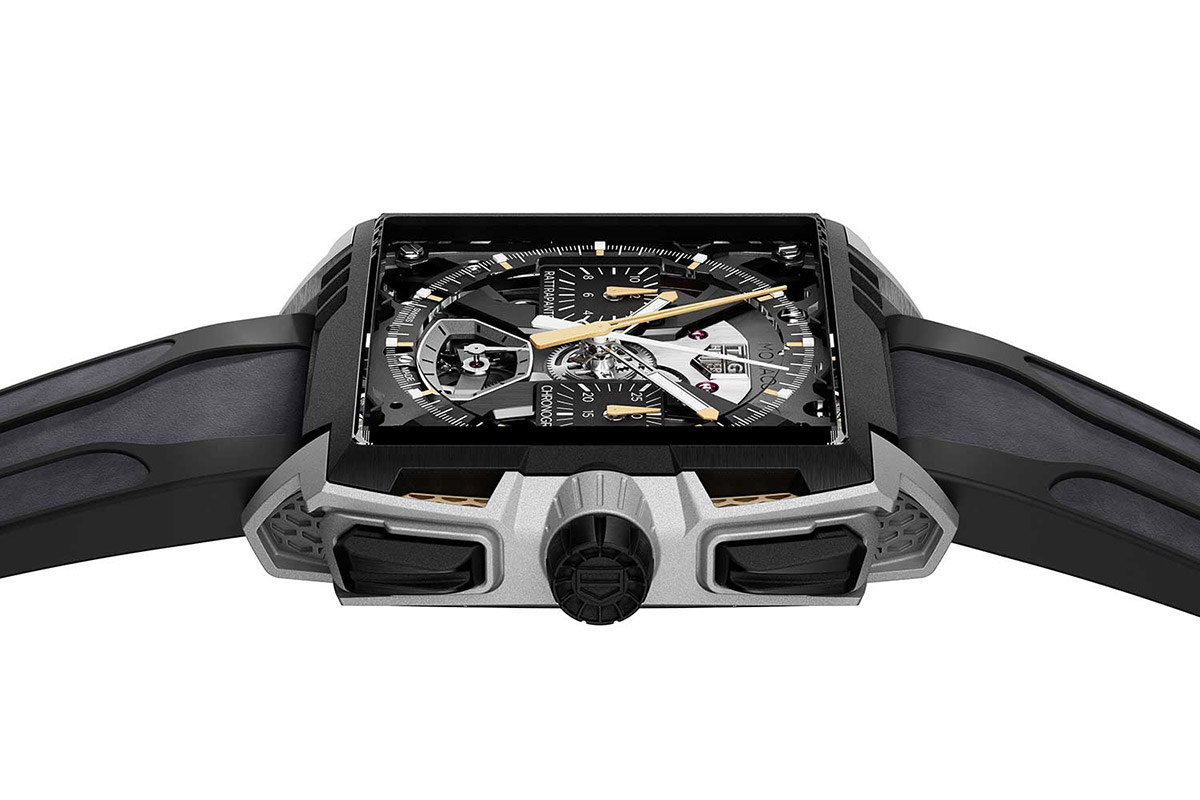The Swiss watchmaker uses 3D printing technology to create a titanium lattice case that strips away excess weight while adding significant visual depth.

Summary
- The new Monaco utilizes Selective Laser Melting to create a hollowed, lattice-like titanium case that mimics the aerodynamics and weight-saving techniques of high-performance racing vehicles.
- A striking visual tension exists between the industrial-grade five titanium structure and the luxury of solid 2N yellow gold components, resulting in a total watch weight of just 85 grams.
- Limited to 30 pieces, the watch features the high-frequency Calibre TH81-00 rattrapante movement, a titanium-heavy engine developed in collaboration with Vaucher Manufacture Fleurier.
The atmosphere at Dubai Watch Week 2025 offered the specific kind of energy reserved for heavy hitters, providing the backdrop for TAG Heuer to drop the Monaco Split-Seconds Chronograph Air 1. While the Monaco lineage usually brings to mind Steve McQueen and retro racing dials, this release looks forward rather than backward. The brand has taken its square-cased icon and subjected it to a rigorous architectural rethink, resulting in a watch that feels less like a timepiece and more like a technical exercise in removing weight.

Building with Lasers
The immediate draw here is the manufacturing process. The case is not milled from a block of metal in the traditional sense. Instead, TAG Heuer employed Selective Laser Melting (SLM), an additive manufacturing technique often associated with aerospace and motorsport. This method allowed the brand to build the 41mm grade 5 titanium case as a complex, integrated lattice.
The result is a skeletonized, supercar-inspired package that appears hollowed out. This structure creates internal voids and honeycomb meshes that standard CNC machines simply cannot achieve. It is a deliberate move to translate motorsport engineering into wristwear, significantly reducing mass without sacrificing rigidity.

A Study in Contrasts
Visually, the watch balances industrial grit with high-gloss luxury. The sandblasted titanium lattices provide a matte, technical frame, while the bezel lattices introduce a sharp contrast, laser-cut from solid 2N yellow gold. It is an aggressive mix of performance metal and precious material.
To further the modern aesthetic, the grade 5 titanium bezel features a black DLC treatment. The use of sapphire crystals on both the front and back opens the mechanics to full view. Despite the heavy visual impact of the gold and the intricate case construction, the physical footprint is surprisingly light. The entire watch weighs 85 grams, a figure that speaks to the obsessive weight-reduction philosophy behind the design.

The Engine Room
Inside the 15.2mm thick case beats the Calibre TH81-00. Developed in collaboration with Vaucher Manufacture Fleurier, this high-frequency automatic rattrapante movement operates at 36,000 vibrations per hour. It is a modification of the VMF 6710 family but reworked specifically for TAG Heuer’s requirements.
To keep inertia low and align with the case’s lightweight philosophy, major movement components are also executed in grade 5 titanium. The movement itself weighs approximately 30 grams. It offers a 65-hour power reserve, though that drops to 55 hours if you keep the chronograph engaged. Visually, the mechanics are sharp, featuring hand beveling and a honeycomb-patterned oscillating weight filled with golden lacquer.
Final Details and Availability
The dial uses translucent sapphire to maintain that open-air feel, anchored by white Super-LumiNova blocks for legibility. The rattrapante central hand gets a gold lacquered finish, while the primary chronograph hand remains white. A split-seconds pusher sits at 9 o’clock, crafted from solid 2N gold as a subtle nod to the crown placement on the original Monaco.
TAG Heuer has capped production at 30 numbered pieces. The model hits the market in December with a retail price of 150,000 CHF, or roughly $187,110 USD.


